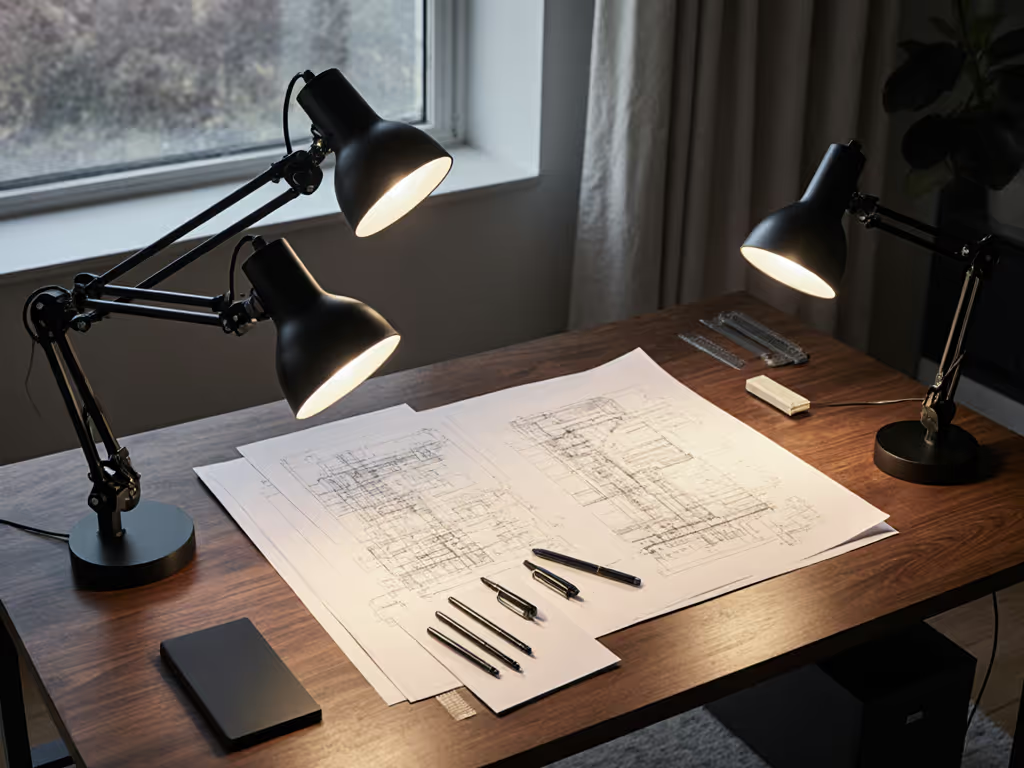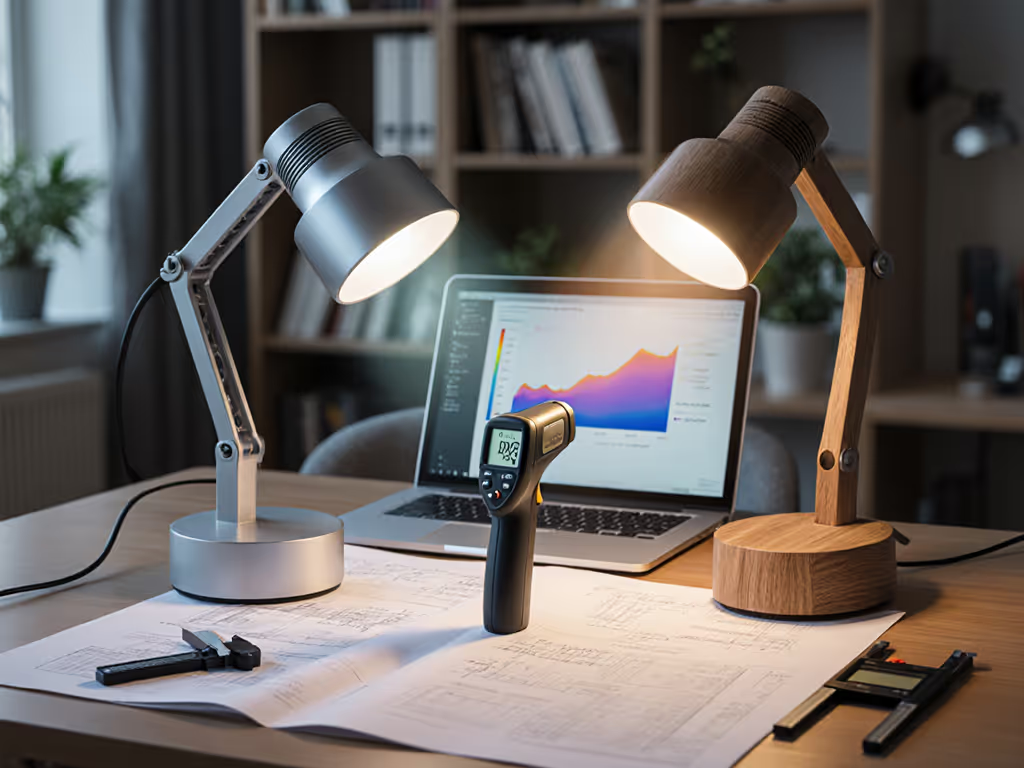
Desk Lamp Bulb Technologies: A Data-Driven Comparison
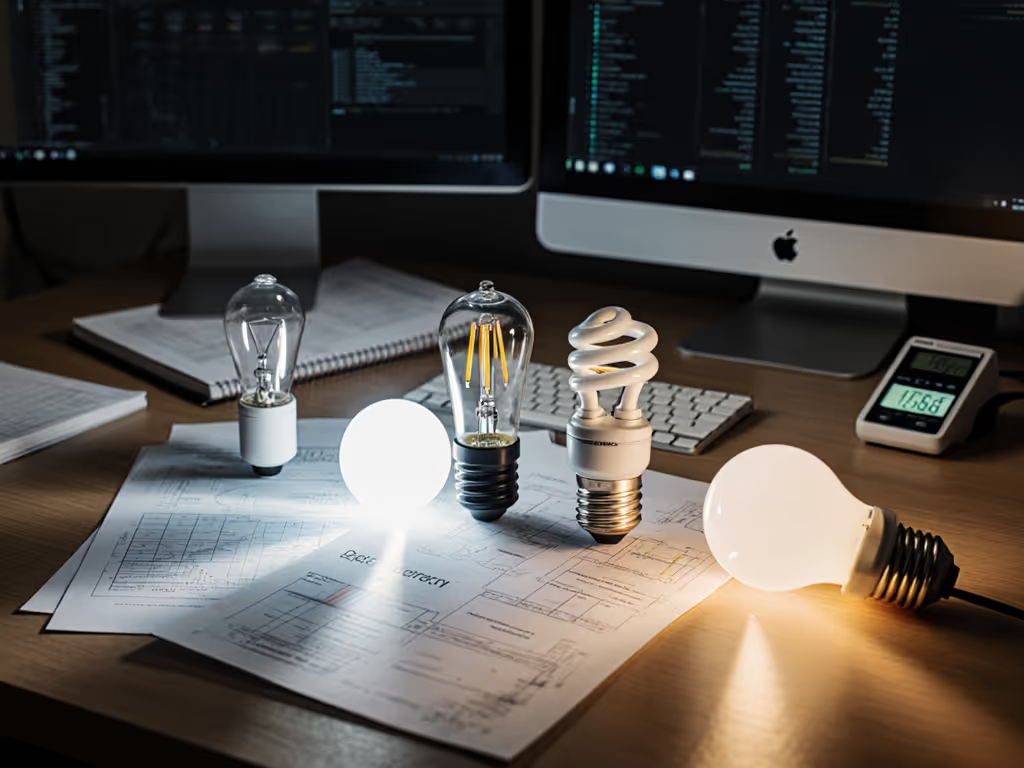
Selecting the right bulb technology for office lamps transforms desk work from eye-straining guesswork to precision ergonomics. With LED, fluorescent, incandescent, and halogen options, this comparison analyzes lab-verified metrics (flicker rates, color rendering, beam control, and lumen efficiency) through the lens of real desk constraints. We prioritize position-holding joints before chasing lumens, translating specs into glare-free task zones, accurate hues for creative work, and flicker-free focus. Hold position, then talk lumens: that's where true value lives.
Performance Metrics Breakdown
Key technical factors determine desk lamp suitability:
Flicker & Eye Comfort
- PWM-driven flicker below 125 Hz causes headaches and camera banding[2][6]
- LED DC-powered drivers (<1% flicker) enable strain-free sessions (IEEE 1789 standard)[1][7]
- Fluorescent magnetic ballasts show 20-40% flicker[2]
Color Accuracy (CRI/R9)
| Tech | Avg. CRI | R9 (Red) | Best For |
|---|---|---|---|
| LED | 90-98 | 90+ | Art, photo editing |
| Halogen | 98-100 | 99+ | True color match |
| Fluorescent | 80-85 | <50 | General tasks |
| Incandescent bulbs (CRI 100) render colors perfectly but lack efficiency[2][7]. For color-critical desks, prioritize LEDs with R9 >90 like the BenQ e-Reading Lamp (95+ CRI)[1]. |
Efficiency & Longevity
- LED delivers 80-100 lm/W, lasting 25k-50k hours[2]
- Halogen: 16-24 lm/W, 2k-4k hours
- Fluorescent: 60-100 lm/W, 9k-20k hours (mercury disposal required)[3] For safe bulb handling and disposal, see our desk lamp maintenance guide. BenQ's 18W LED achieves 1600 lux at 17.71 inches height (triple incandescent output per watt)[1][3].

BenQ e-Reading Desk Lamp
Task-Specific Technology Recommendations
Screen-Intensive Desks
- Choose LEDs with asymmetric beams to avoid monitor glare If hand dominance matters for your setup, compare asymmetric options in our left-handed desk lamps guide.
- 500 lux at 40cm distance for documents[7]
- BenQ's "Screen Mode" dims center brightness to reduce reflections[1]
Color-Sensitive Work (Art/Design)
- Halogen or high-R9 LEDs (BenQ, CRI 95+)
- Avoid fluorescents with weak R9 reds (Valoisa CFML27VLX: CRI 80)[2][7]
Low-Heat Environments
- LEDs run cool (<35°C surface temp) vs. halogens (>200°C)[6]
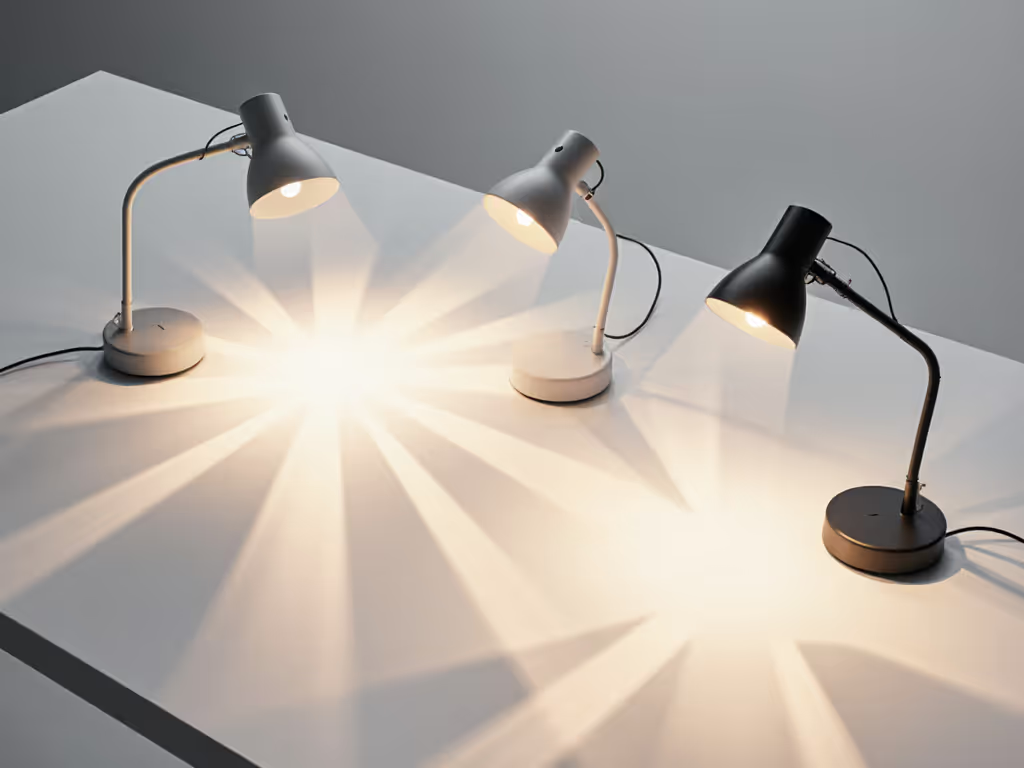
Bulb Compatibility & Physical Constraints
Desk lamp bases dictate bulb choice:
- Swing-arm LEDs: GU10/GX53 bases (e.g., BenQ) for directional focus[1]
- Clip lamps: MR16 (GX5.3 pin) for low-profile spots[1][6]
- Fluorescents: 4-pin (GX10Q-4) for Verilux-style fixtures (Valoisa replacement)[1]
Durability matters: BenQ's torque springs prevent sag during repositioning[1], while cheaper halogen joints loosen under heat[6].
Actionable Selection Checklist
| Constraint | Priority Tech | Key Metric Target |
|---|---|---|
| Small desk space | LED MR16 | Beam angle ≤ 40° |
| Flicker sensitivity | DC-driven LED | IEEE 1789 certification |
| Color accuracy | Halogen or high-CRI LED | CRI >95, R9 >90 |
| Budget efficiency | LED A19 | ≥80 lm/W, 15k hours |
For presbyopia (45+ users), target 750-1,000 lux at 30cm[7]. For placement and intensity tips to reliably reach those targets, see our 500 lux desk lighting guide. Verify lux delivery with a phone meter app, since many lamps underperform at real desk distances. Replace fluorescents like the Valoisa CFML27VLX ($16.98) cautiously; they offer bright 6500K daylight but contain mercury[2][7].
Conclusion
LED dominates desk use for flicker-free dimming, CRI flexibility, and compact heat, but only when paired with stable adjustability. BenQ's data-backed design (1600 lux, ultrawide coverage, auto-dimming) solves core workspace pain points: screen glare, color inaccuracy, and repositioning fatigue. For fluorescents, weigh Valoisa's brightness against mercury handling. Ultimately, lamp joints that hold position enable every other metric to matter.
Related Articles


Standing Desk Lamp Compatibility: Reach Tested to 42"
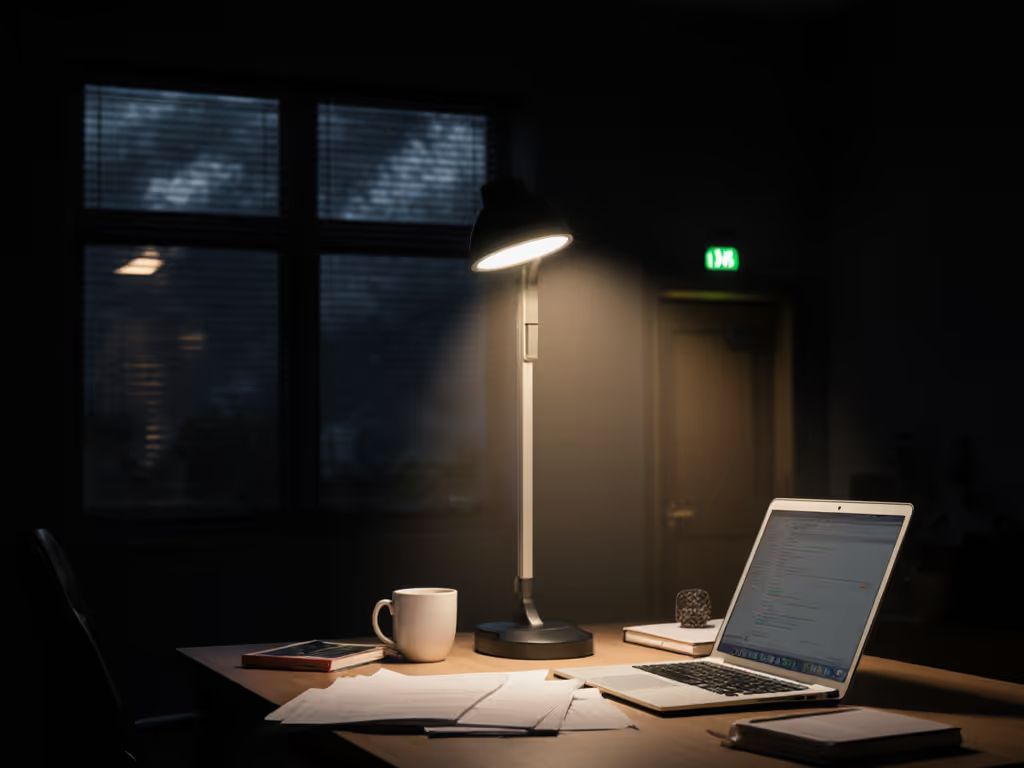
Emergency LED Desk Lamps: Battery Backup Task Lighting Tested

LED Desk Lighting vs Monitor Lamps: OLED LCD e-ink Test
